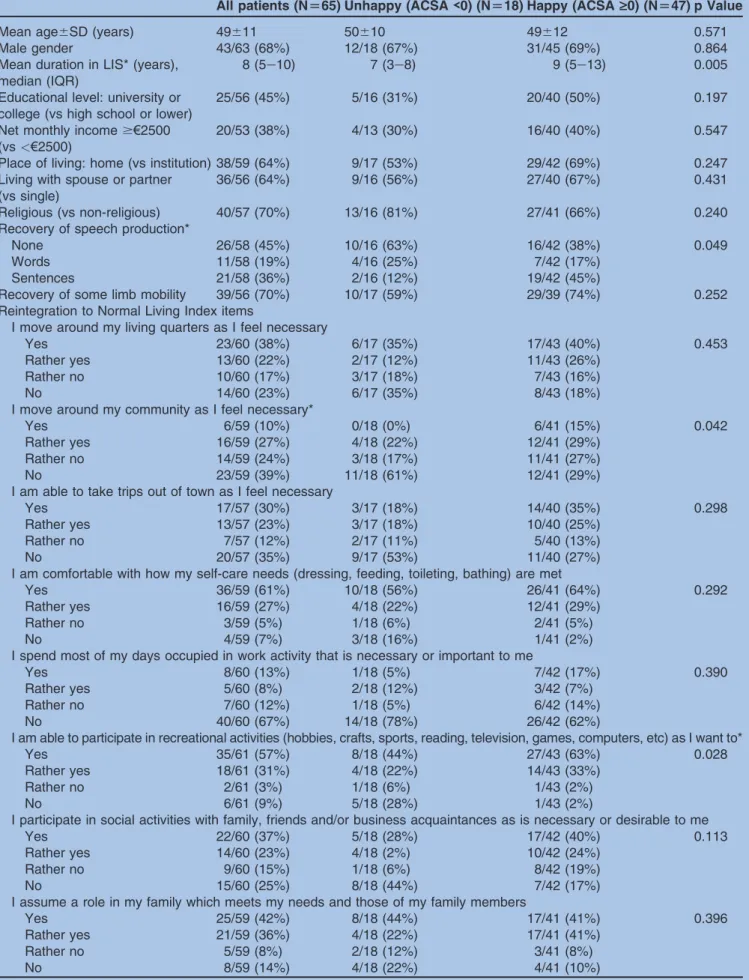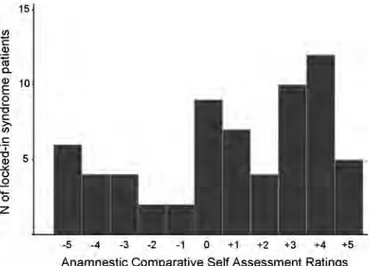A survey on self-assessed well-being in a cohort of chronic locked-in syndrome patients: happy majority, miserable minority
Texte intégral
Figure



Documents relatifs
We hypothesized that people with SPA of social loss and physical decline would be more susceptible to negative effects of perceived ageism, whereas those with SPA of continued
Accepted Manuscript The log of household per capita income (lnhhpci) is significantly positive for both poor and non- poor but, whereas the coefficient on log of race-specific
A total of N = 133 participants, N = 41 nursing home residents and N = 92 non-institutionalized individuals, aged between 65 and 98 years (M = 76.02, SD = 7.35) reported
the judgement of life satisfaction has three temporal orientations, namely past, present, and future life that may lead to a distinction of.. retrospective satisfaction
Global life satisfaction is systematically related to domain satisfaction regarding one’s family life, financial situation, health condition, and job situation (the latter will
The measures of pension insecurity are the standardised subjective probabilities that the government will increase the retirement age or reduce pensions in the future, and the
Les résultats de notre étude prospective in vivo après 3 mois de séjour en bouche des brackets métalliques en acier inoxydable (SS) et en titane (Ti) ont montré une résistance de
On sent qu'ils sont fort embarrassés de nous et qu'ils préfèreraient nous abandonner afin de se constituer plus vite prisonniers chez les « bons » américains